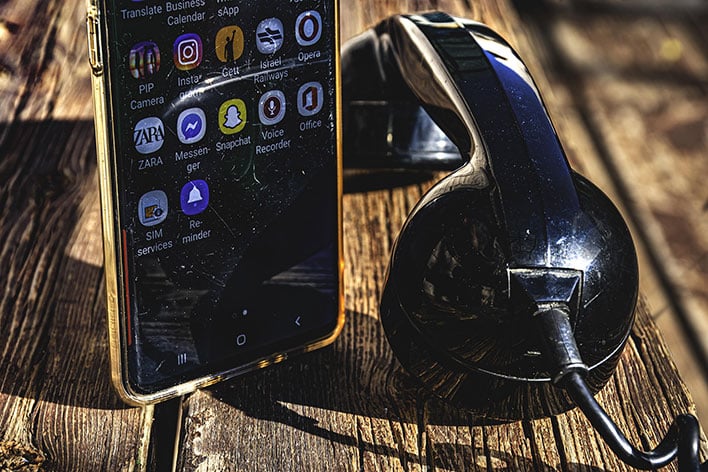Turns Out Telephone Wire Could Be 3X Faster Than Consumer Fiber For High Speed Broadband

While you're waiting on your internet service provider (ISP) to roll out fiber optic cable to your area for those sweet gigabit broadband speeds, maybe you should hope they tap into your phone line instead. Not, not for surveillance purposes. Instead, researchers at the University of Cambridge in the UK claim standard copper telephone wire can deliver broadband speeds much higher than most consumer fiber deployments, and at a lower price to boot.
This is potentially a big deal because it's expensive to deploy fiber cabling, and ISPs aren't real keen to spend that kind of money in sparsely populated areas. In contrast, copper wiring for telephones (those things we used to actually call people on before smartphones and text messaging took over) already exists in many areas.
According to the researchers, repurposed copper wire can support much higher frequencies in use now (up to five times higher), and by extending the frequency spectrum up to 848MHz, data rates of up to 10Gbps would be possible. And that's not the ceiling, either.
"The available and emerging technologies only consider sub-1GHz frequency spectrum. We believe that the DSL technologies can further boost the achievable rates beyond 10Gbps by utilizing carrier frequencies higher than 1GHz. In this way, the existing copper infrastructure can be further used to satisfy the data rates required for the future communication networks without any need of replacing all of the copper infrastructure," the researchers state in a paper published to Nature.
According to Dr. Erin Dinc at the University of Cambridge, nobody has really bothered to investigate the theoretical limits of existing twisted pair (TP) wires because it was invented so long ago—in 1881 by Alexander Graham Bell. However, believes it holds promise, just not perhaps at the theoretical upper bounds.
Higher frequencies can increase the error rate, and so more research is needed to see what is actually possible. However. Dr. Dinc estimates that phone wiring could realistically hit 3Gbps, making it three times faster than typical 1Gbps fiber optic deployments. Hence the headline, which might elicit some grumbles.
Here's the thing—fiber cable is capable of incredible speeds beyond what you typically see today, and certainly much higher than 10Gbps. However, the bulk of consumer (not enterprise or business) broadband based on fiber is at 1Gbps, with some exceptions of course. Repurposing copper wire would be a stopgap solution (with challenges), but the short-term advantage would be that it could outpace currently deployed consumer fiber networks at a lower cost and reach more areas. Or at least that's how we're reading things.


